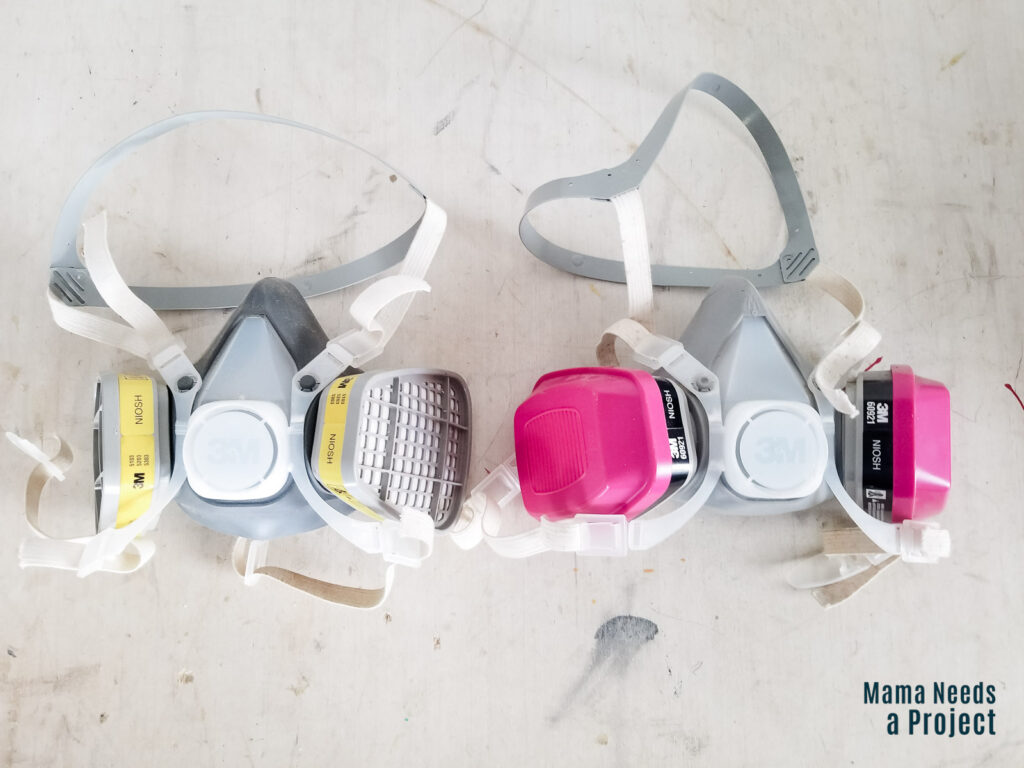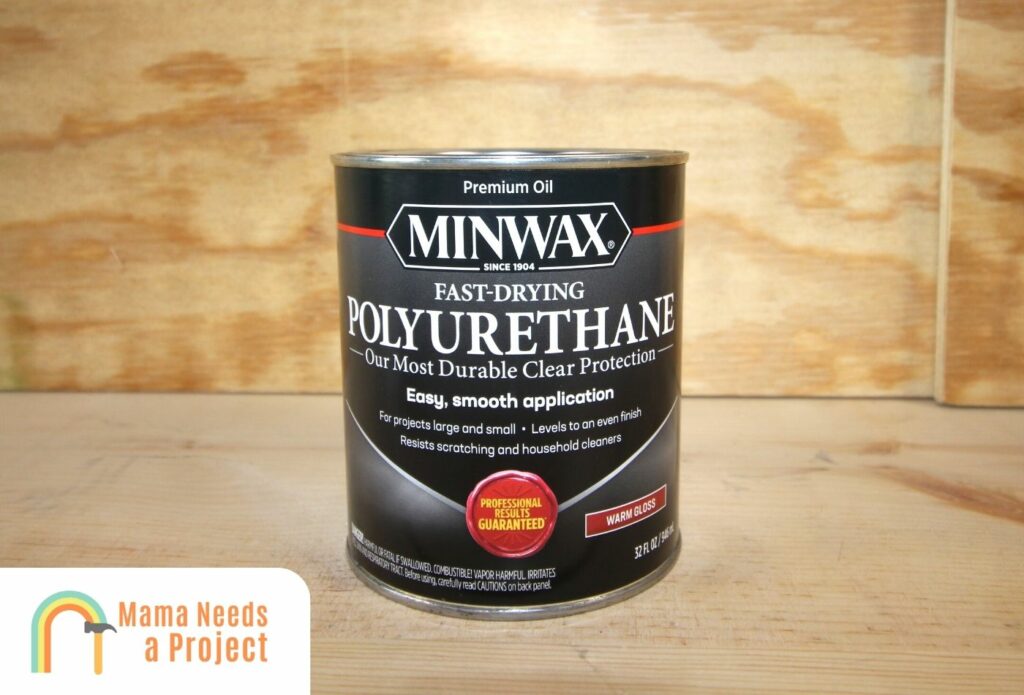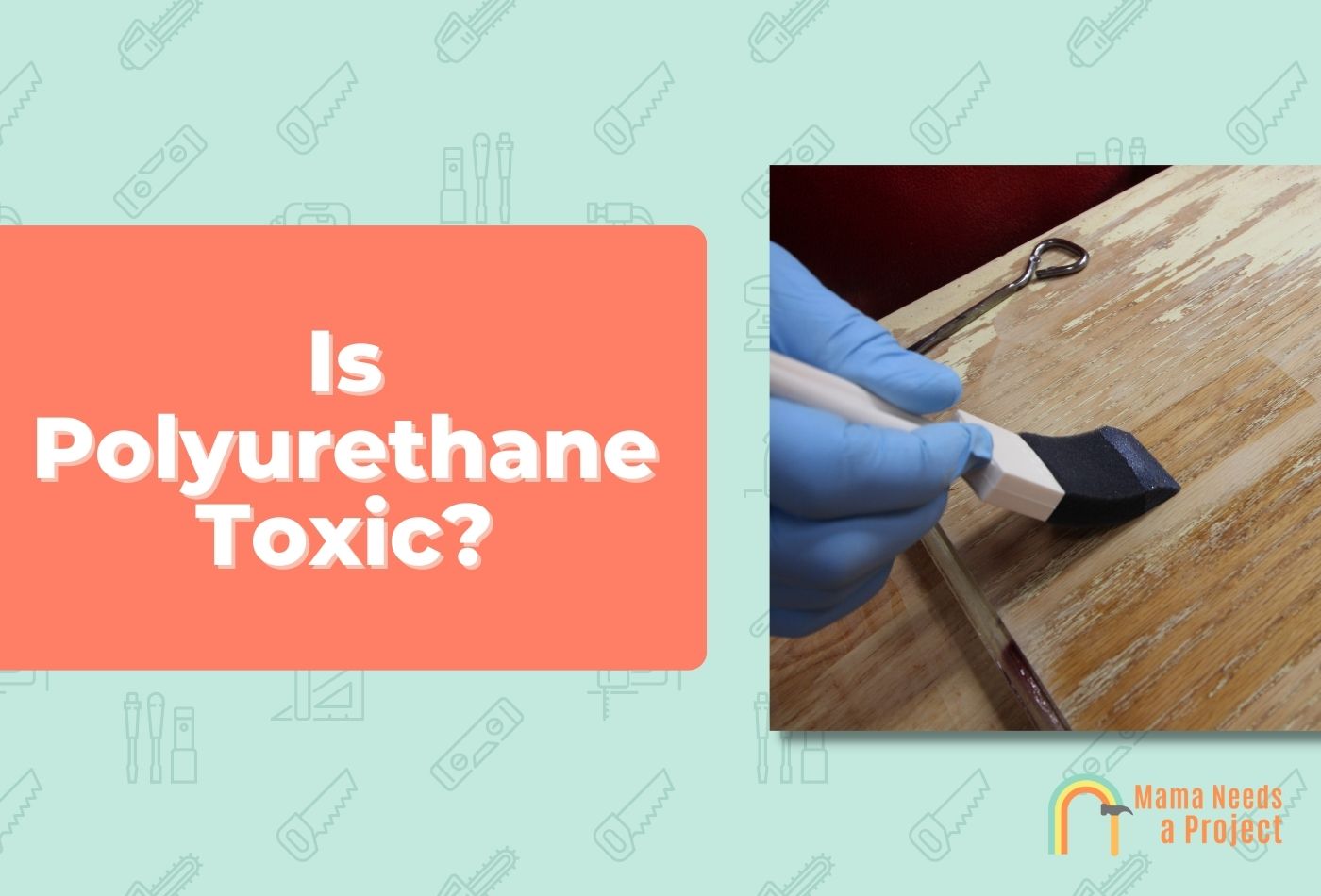Is Polyurethane Toxic? (Here’s What You Should Know!)
When it comes to woodworking, polyurethane is commonly used to add protection and durability to your projects.
But is polyurethane toxic?
In this post, I’ll help you better understand how polyurethane works and how to stay safe when using it. Let’s dig in!
- Some types of polyurethane are more toxic than others. Oil based polyurethane contains more volatile chemicals than water based polyurethane.
- You should always use a respirator and other safety gear when applying polyurethane.
- If polyurethane isn’t an option, some alternatives like wood stain can still protect your wood projects and make them look gorgeous.
Is Polyurethane Toxic?
So, is polyurethane toxic? Yes…and no…Let me explain.
Uncured polyurethane is known to cause several kinds of respiratory problems, eye and throat irritation, skin irritations, and headaches, and is very dangerous to ingest. Adverse health effects sound like the equivalent of toxic, doesn’t it?
In general, polyurethane should not be applied anywhere near babies, small children, or pregnant women.
However, once polyurethane has cured, it becomes food safe and non-toxic. It is safe for kitchen tables and countertops since it is mineral and vegetable oil resistant.
It’s even safe to use on baby products and can protect surfaces from mold, fungus, and the elements.
Wondering about using polyurethane to protect against water? Check out my guide on if polyurethane is waterproof!
Is Polyurethane Toxic to Breathe?
Polyurethane fumes can cause respiratory problems and damage the lungs if exposed over long periods. Toxic fumes are a real danger, and it is essential to be aware of indoor air quality when working with toxic chemicals.
Overexposure to polyurethane fumes can be detrimental to those with asthma and other respiratory issues, so it is always best to work in a well-ventilated area.
Is Polyurethane Toxic to Skin?
When working with polyurethane, you’re bound to get some on your bare skin. You won’t get an immediate chemical burn, but wiping it off your skin as soon as possible is a good idea.
If you know you have sensitive skin, you should be extra careful and keep the polyurethane coating away from your skin. I always recommend wearing gloves when applying polyurethane.
That said, you never want to get it in your eyes or ingest it. If you get any in your eyes, immediately rinse your eye with water for at least 15 minutes. If you have pain or discomfort after that, you must seek medical attention.
If you somehow ingest polyurethane, you need to call Poison Control immediately. Consuming polyurethane based products should be taken seriously.
Is Polyurethane Toxic for the Environment?
Some may wonder if polyurethane fumes are toxic to the environment, which is understandable. Unfortunately, the research is limited on this topic.
I can tell you that polyurethane is used to preserve natural resources such as wood. In this case, it is good for the environment and helps wood furniture and wood flooring last longer, and reduces energy emissions.
Some studies show that when polyurethane burns, it lets off toxic gases and fumes. Fumes produced can cause respiratory system issues and could cause environmental problems we don’t know about yet.
So there are mixed results and opinions on if it’s truly toxic to the environment.
Is Polyurethane Toxic Once Dried?
You might think once polyurethane is dry, it is harmless, but in most cases, you still need to give it a few more days to cure. Once the polyurethane is cured, it is safe and won’t cause any health problems.
Generally, polyurethane takes about 24 hours to dry completely. It then needs another 4-9 days to cure completely. This will vary depending on the type of polyurethane used.
The reason for this is during the curing process, the polyurethane is going through a chemical reaction, and it goes through the off-gassing process. These gases are what can cause some respiratory system issues. This is why you should not sleep in a home after applying polyurethane.
What Are the Health Hazards of Polyurethane Dust?
If you need to sand a wood surface that has already been sealed with polyurethane, chances are you will create some dust, especially if you are sanding a large area like wood floors.
Some health risks involved with this are eye, mucous membranes, and lung irritation. There are ways to avoid these health issues, though, and I will discuss those in the next section.
How to Stay Safe When Applying Polyurethane
Now that we know some of the facts surrounding polyurethane use and the potential health risks involved let’s talk about the personal protective equipment that will help you avoid any of these problems.
The great part is that polyurethane can be, and is safe to use, if you take the necessary precautions.
Wear Gloves
Gloves will protect your hands from any toxic chemical formulations (even polyurethane) you may use while working with wood.
The best gloves to use are nitrile gloves since they can withstand all the chemicals they may come in contact with during your woodworking project.
Wear a Respirator

If you take anything from this post, please remember this: the air inside buildings is not as good as you think. So if you plan to use polyurethane indoors, you must take the necessary precautions to protect your lungs.
If working in an area with proper ventilation is out of the question, then you will need to invest in a respirator. This will help keep any polyurethane coating toxicity out of your lungs. Even if you’re working in a well ventilated area, I still recommend using a respirator for additional protection.
You should also wear it after the polyurethane has dried to avoid any off gas that will happen for a few days after your last coat.
Apply in a Well Ventilated Area
Air quality is so important when applying a polyurethane finish. If you must use it in an indoor environment, here are a few things you can do to ensure it is well-ventilated.
- Open as many windows and doors as possible
- Turn on a fan to increase air flow in the area
If you notice difficulty breathing, take at least a 30-minute break away from the room and reassess your ventilation and protective equipment.
How is Polyurethane Used?

Did you know that polyurethane is a a type plastic? It is used in various applications ranging from medical devices to baby products. It’s incredibly versatile, but in this guide, I’ll focus on its applications in woodworking.
- Polyurethane can be found in paints called PU paints. These paints are used for industrial coatings since they are resistant and highly durable.
- The most common use for polyurethane is as a protective coating over wood flooring and furniture
- It is also used to seal, stain and protect wood furniture and cabinets.
Polyurethane is best used on items that will be indoors and not exposed to high heat. Polyurethane has a flammable nature which I’ll discuss later in this post.
There are also some natural ways to protect wood without stain. You can check out these ways to darken wood without stain for more info!
FAQs
Is Polyurethane a Carcinogen?
No studies state that polyurethane is a carcinogen to humans, though it has been studied to be carcinogenic in some animals. It’s hard to state whether there are long-term effects other than the previously stated respiratory problems, especially the lungs. Could it cause cancer in someone’s lungs? It’s a possibility but not a definite fact.
Is Polyurethane Flammable?
Yes, polyurethane is highly flammable. If it ignites, polyurethane will burn fast and hot. Excessive heat is dangerous, but not only that, it will also let off toxic gases and irritants into the air. This can cause terrible air quality and harm to anyone nearby.
If you recently applied polyurethane to a project, you must dispose of the oil-covered rags properly. If you don’t, it is possible for the rags to become too hot and spontaneously combust.
To dispose of them correctly, hang the wet rags up somewhere cool and let them dry completely. Then you can throw them away in the trash safely. Never throw away wet rags in the garbage.
If your wood furniture or anything that has been sealed with polyurethane catches fire, be extremely careful, and don’t breathe in the fumes and smoke. The smoke will have carbon monoxide and hydrogen cyanide in it, which are dangerous to inhale in large amounts.
Is There a Polyurethane Alternative?
For those who want to avoid polyurethane altogether, there are a few alternatives to consider. I’ll review them and give you the pros and cons of each.
- Mineral Oil: Mineral oil for wood is made from vegetable or mineral oils and is a great all-natural alternative to polyurethane. It is a safe material used for centuries to protect wood. It is also in many household products.
- Hard Wax Oil: There are all-natural options for hard wax oil or some that have added solvents or VOCs. They usually are comprised of a hard wax such as beeswax and various vegetable oils. Hard wax oil has gained popularity for finished furniture pieces since it gives the furniture a soft, buttery feel and look.
- Shellac: Another natural alternative is shellac. It is made from dissolving flakes of resin secreted by a bug called the “lac” in alcohol. Shellac does offer some protection but is not heat resistant and can chip over time. However, this is a wood finish that has been used for thousands of years and comes in a variety of shades.
- Tung Oil: Tung oil is an oil pressed from the nuts of a Chinese tree called the “tung tree.” This oil brings out the natural beauty of the wood and can be used in all kinds of hard and soft woods. Water stains and rings can show up on wood surfaces that have been coated with tung oil, so make sure you use coasters for your beverages.
- Linseed Oil: Linseed oil is probably the best choice to protect and preserve a wood finish. It is derived from flaxseed and is an excellent protective layer for wood surfaces. If you use it on a heavy traffic area like wood floors, you may need to reapply more often, though it is still the best choice for most applications.
What are VOCs?
VOC stands for volatile organic compounds. These chemicals are added to them that help them stay wet and applicable in the can and then dry once they are applied. These VOCs can potentially be a respiratory toxins.
How Long Does Polyurethane Emit VOCs?
The length of time that polyurethane emits VOC toxic fumes will depend on ventilation, humidity, and other environmental factors. The first two days are the worst for polyurethane fumes, and you really should wear a respirator if you’re around any uncured polyurethane.
It has been shown that polyurethane will continue to emit low VOC levels for up to 30 days after applying to a wood surface.
There are two types of polyurethane: oil-based and water-based. Oil-based polyurethane has a higher VOC score and takes much longer to off gas. In some cases, it can take up to six months. However, oil-based polyurethane is more heat resistant than its water-based counterpart.
Water-based polyurethane has a lower VOC score, and the off-gassing process will be over in about a week. Water-based polyurethane is not recommended for surfaces where you will place anything hot, like a kitchen counter or dining room table, unless you plan on using efficient hot pads.
Final Thoughts
So, is polyurethane toxic? The answer is – it can be, depending on the type of polyurethane can how you use it.
In general oil based polyurethane is more toxic than water based polyurethane, but all polyurethane fumes should be avoided.
You can avoid the negative health effects of polyurethane by always using the proper gear including a respirator, gloves, and applying it in a well-ventilated area.

Miriam Ronne wears many hats, including but not limited to freelance writer, blogger, professional quilter, serial DIYer, and obsessed dog mom. She loves to teach beginners how to do all sorts of crafts and techniques. If she’s not writing her next blog post, she’s either sewing a new project or playing with her pup. You can find Miriam on her blog, Stitch Obsessed, or connect with her on Instagram.

